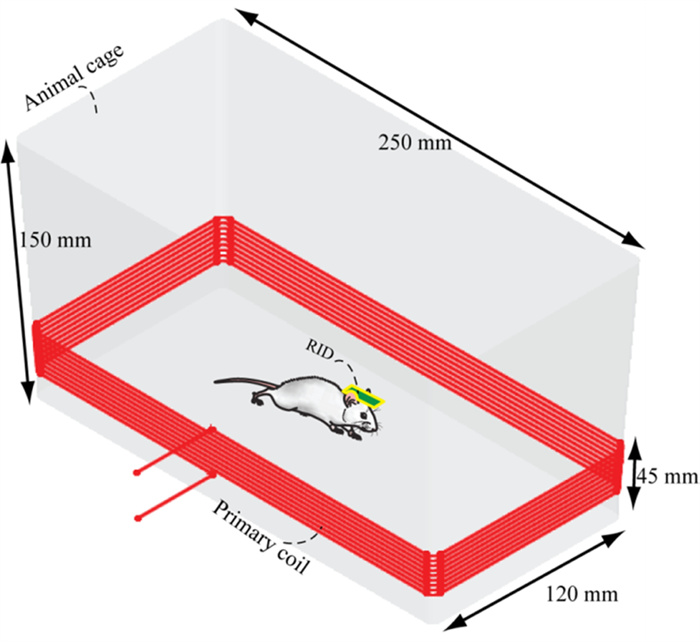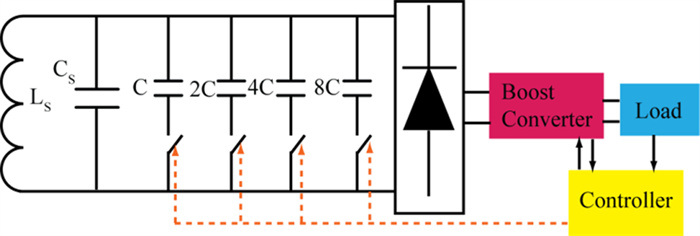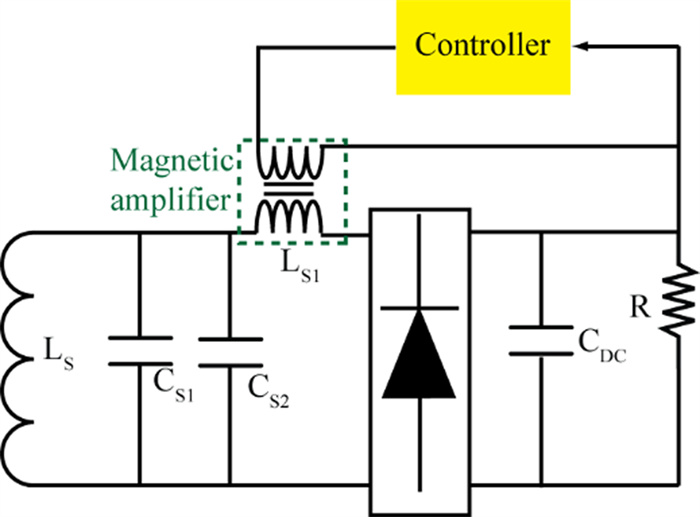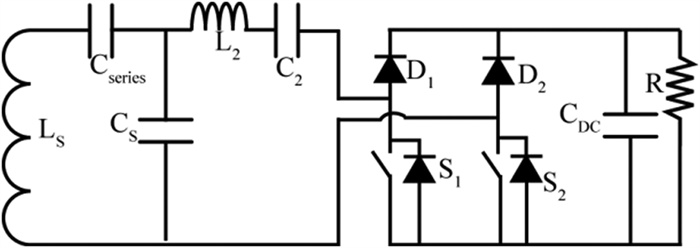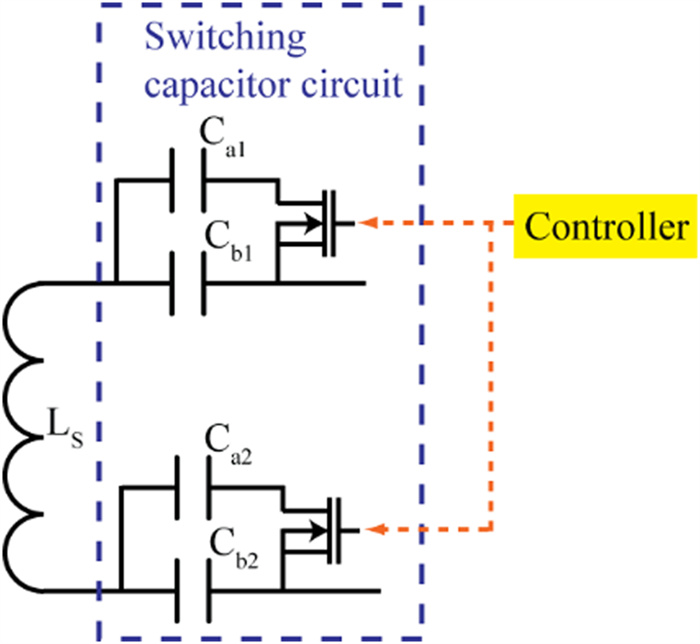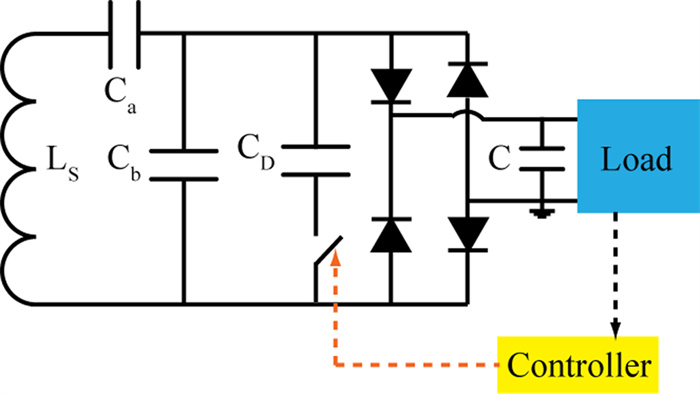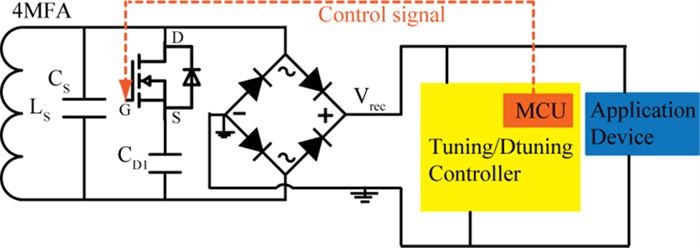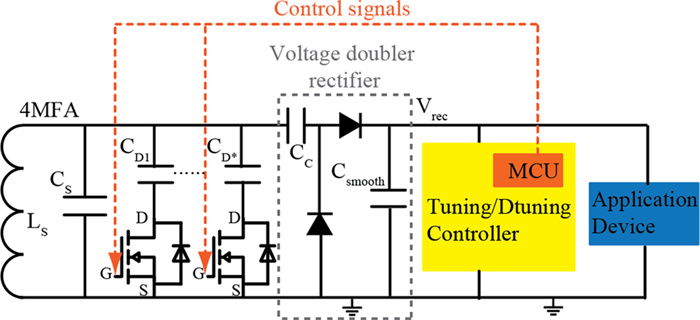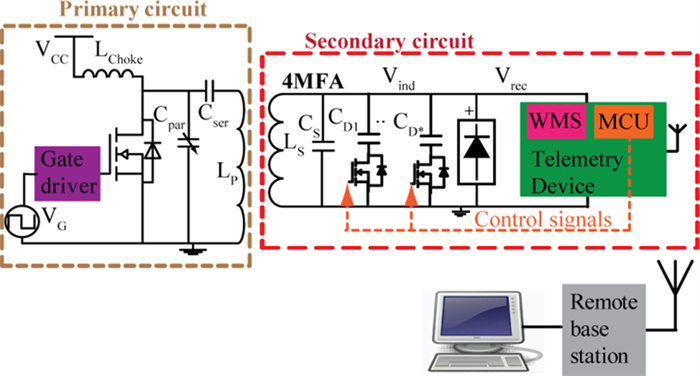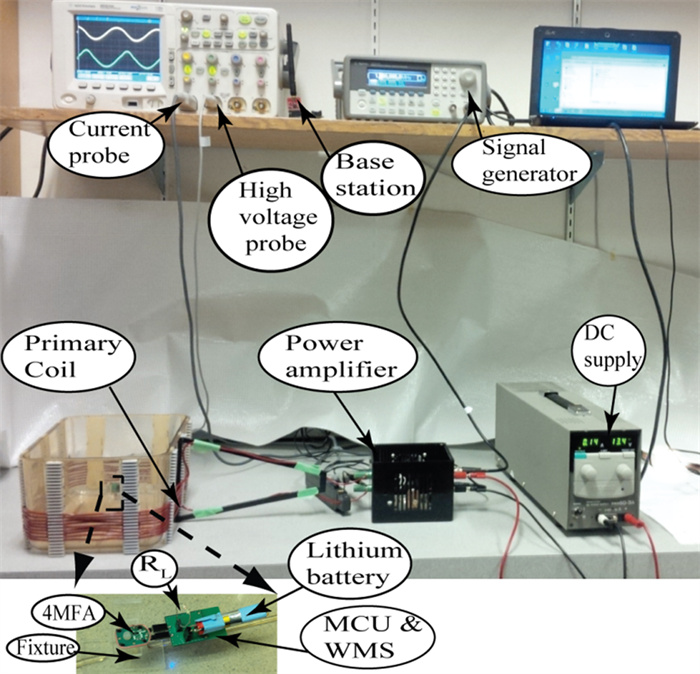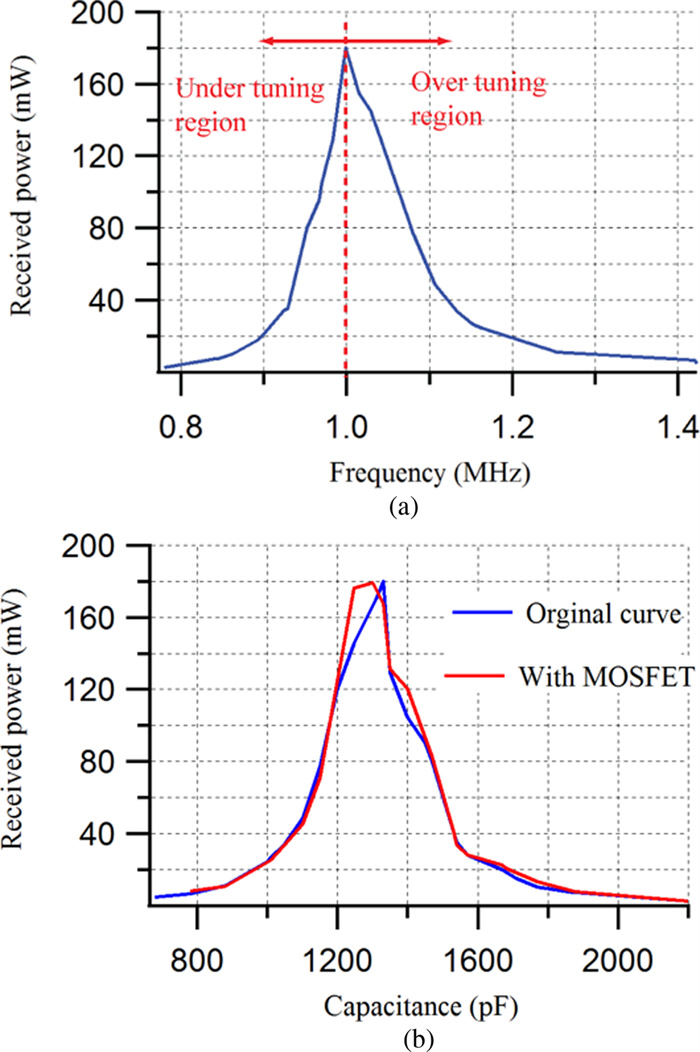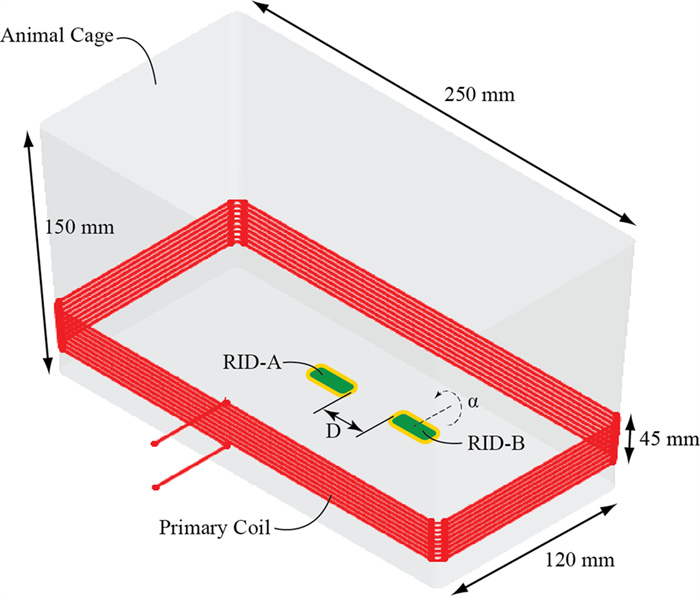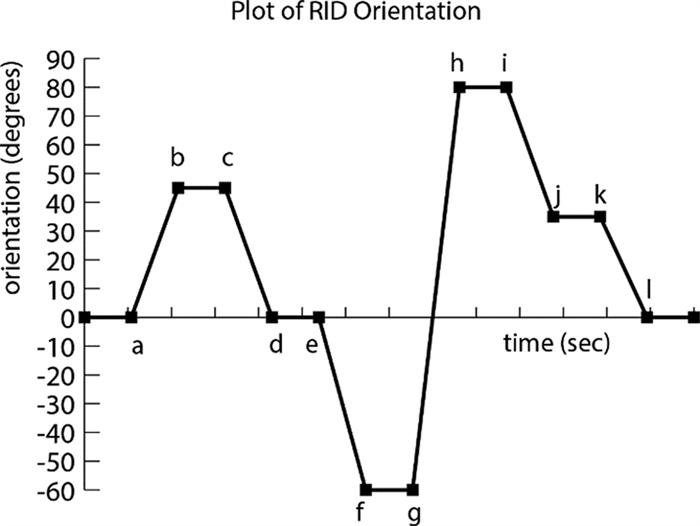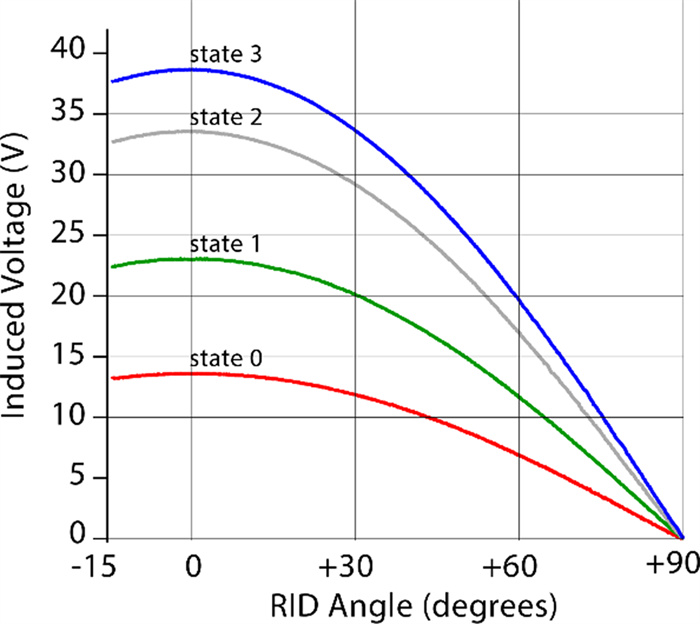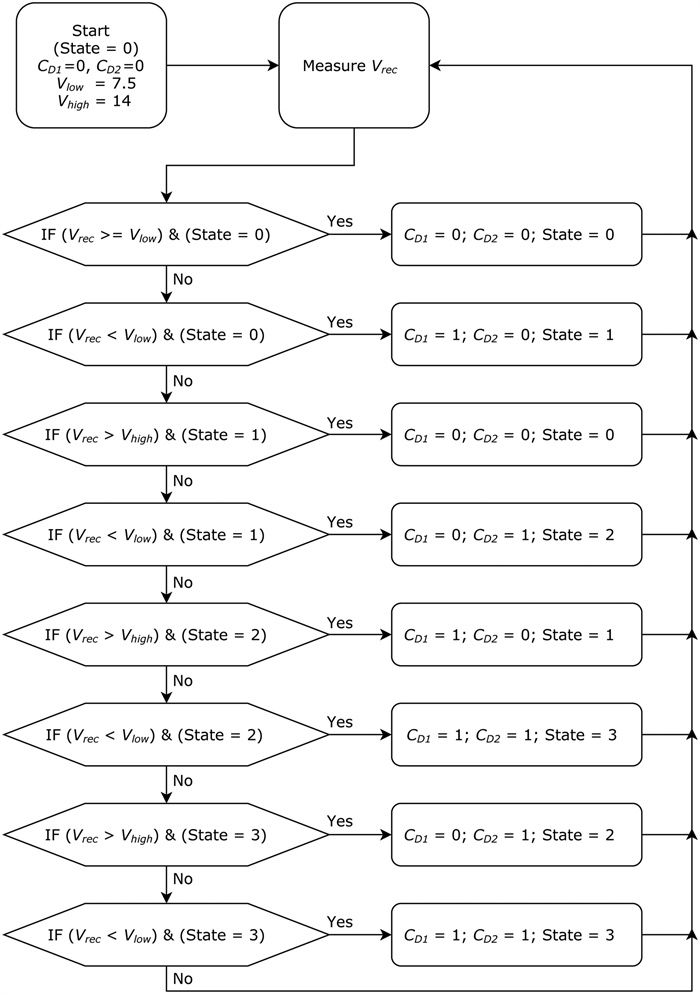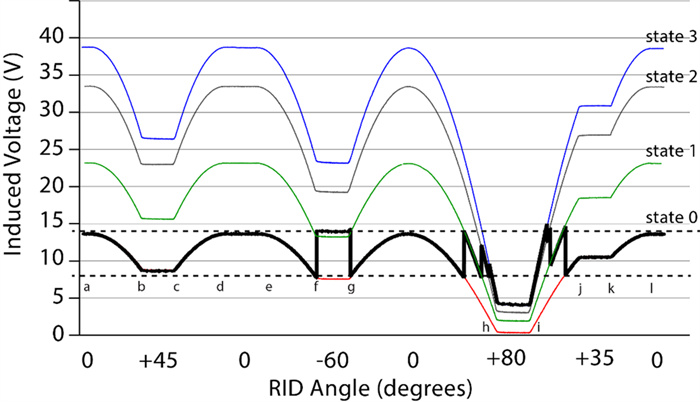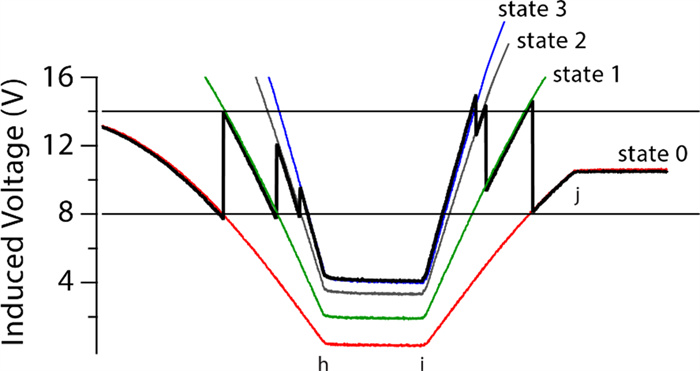Controlling wireless power transfer by tuning and detuning resonance of telemetric devices for rodents
-
1.
Department of Mechanical Engineering, University of Victoria, Victoria, BC, V8W 2Y2, Canada
-
2.
Department of Biology, University of Victoria, Victoria, BC, V8W 2Y2, Canada
More Information
-
Author Bio:
 Basem M. Badr
Basem M. Badr received B.Sc. in Electrical and Power Systems from Mansoura University, Egypt in 2007, and the Master's degree in Control Systems Engineering from King Saud University, Saudi Arabia in March 2011. He had the Ph.D. degree in Mechanical Engineering at the University of Victoria, in 2016. He is an accomplished book author, hold three patents and had many journal and conference papers. His research interests include Wireless Power Transfer, Energy Harvesting, Biomedical Applications, Control Systems, and Electric Motor Drives. His industry work experience spans the biomedical and renewable energy sectors.
 Art Makosinski
Art Makosinski holds a BA in Industrial Education from Newark State College/Newark College of Engineering in 1973. He has been Manager of Laboratories at the Department of Mechanical Engineering at the University of Victoria between 1988–2017 and 2018–2019. He has coauthored several patents in the fields of energy conversion and medical sensors. His current work is focused on the design and construction of ultra-low power converters and archival film scanning methods.
 Nikolai Dechev
Nikolai Dechev received his B.A.Sc., M.A.Sc., and Ph.D. degrees from the Department of Mechanical Engineering, University of Toronto, in 1996, 1999, and 2004, respectively. He is currently an Associate Professor and Department Chair of Mechanical Engineering at the University of Victoria, Canada. His research program centers on biomedical systems design in the area of hand prosthesis. This involves aspects such as bio-signal measurements, implantable sensors and prosthesis control. He also has expertise in MEMS sensors, and robotic micromanipulation. Dr. Dechev is a Member of the IEEE.
 Kerry R. Delaney
Kerry R. Delaney received his BSc in zoology from the University of British Columbia and Ph.D. in neuroscience from Princeton University, Princeton NJ in 1987. Next he undertook postdoctoral work in neuroscience at U.C. Berkeley, New York University and AT&T Bell laboratories before being appointed to the faculty at Simon Fraser University, BC in 1992. He joined the faculty at the University of Victoria in 2004 and is currently Professor of Biology, and former Chair of the Department. His research program focuses on synaptic and cellular neurophysiology of olfactory sensory processing, neuromuscular transmission, and the role of synaptic dysfunction in neuro-developmental disorders such as Rett syndrome, using a variety of optical and electrophysiological techniques. See web.uvic.ca/delaneylab for more information
-
Corresponding author:
Basem M. Badr, Department of Mechanical Engineering, University of Victoria, Victoria, BC, V8W 2Y2, Canada. E-mail: bbadr@uvic.ca
-
Abstract
Telemetry acquisition from rodents is important in biomedical research, where rodent behavior data is used to study disease models. Telemetry devices for such data acquisition require a long-term powering method. Wireless power transfer (WPT) via magnetic resonant coupling can provide continuous power to multiple small telemetric devices. Our loosely coupled WPT (LCWPT) system consists of a stationary primary coil and multiple freely moving secondary coils. Our previous LCWPT system was designed to transfer reasonable power to secondary coils at poor orientations but transfers excessively high amounts of power at favorable orientations. Reasonable power is needed for telemetry and radio electronics, but highly induced voltage on the secondary coil creates excess energy which must be dissipated by previous devices, and caused problems (localized heat damage and variations in component properties) leading to drift in operating frequency. To remedy these two problems, a novel scheme is proposed to automatically tune or detune the resonant frequency of the secondary circuit. Our closed-loop controlled tuning or detuning (CTD) approach can be used to prevent excessive power transfer by detuning, or to improve power transfer by tuning, depending on the need. Furthermore, this novel CTD scheme facilitates the use of multiple telemetric devices.
-
About this article
Cite this article
Badr B M, Makosinski A, Dechev N, Delaney K R 2020. Controlling wireless power transfer by tuning and detuning resonance of telemetric devices for rodents. Wireless Power Transfer 7(1) :19-32 doi: 10.1017/wpt.2020.1
|
Badr B M, Makosinski A, Dechev N, Delaney K R 2020. Controlling wireless power transfer by tuning and detuning resonance of telemetric devices for rodents. Wireless Power Transfer 7(1) :19-32 doi: 10.1017/wpt.2020.1
|


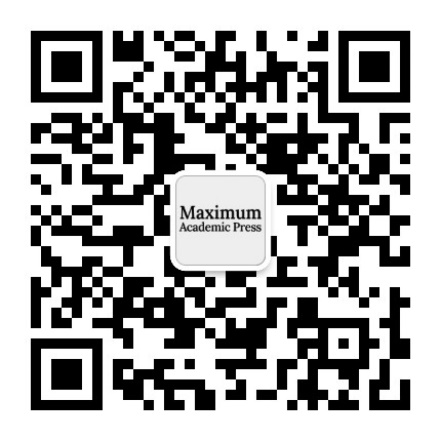
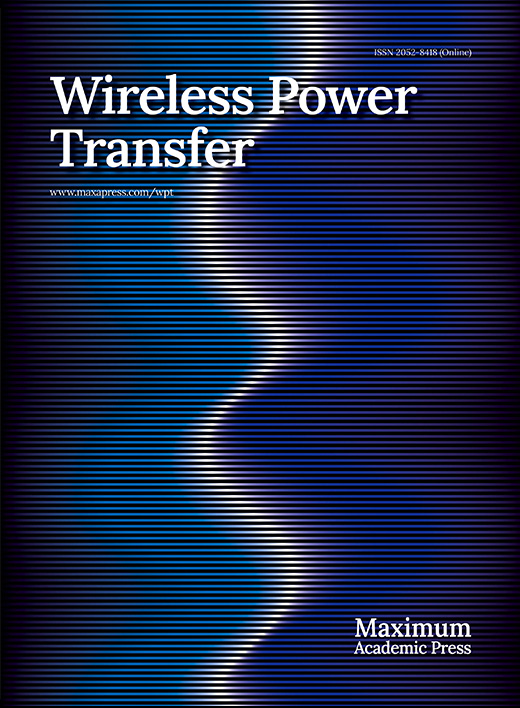






 Basem M. Badr received B.Sc. in Electrical and Power Systems from Mansoura University, Egypt in 2007, and the Master's degree in Control Systems Engineering from King Saud University, Saudi Arabia in March 2011. He had the Ph.D. degree in Mechanical Engineering at the University of Victoria, in 2016. He is an accomplished book author, hold three patents and had many journal and conference papers. His research interests include Wireless Power Transfer, Energy Harvesting, Biomedical Applications, Control Systems, and Electric Motor Drives. His industry work experience spans the biomedical and renewable energy sectors.
Basem M. Badr received B.Sc. in Electrical and Power Systems from Mansoura University, Egypt in 2007, and the Master's degree in Control Systems Engineering from King Saud University, Saudi Arabia in March 2011. He had the Ph.D. degree in Mechanical Engineering at the University of Victoria, in 2016. He is an accomplished book author, hold three patents and had many journal and conference papers. His research interests include Wireless Power Transfer, Energy Harvesting, Biomedical Applications, Control Systems, and Electric Motor Drives. His industry work experience spans the biomedical and renewable energy sectors.  Art Makosinski holds a BA in Industrial Education from Newark State College/Newark College of Engineering in 1973. He has been Manager of Laboratories at the Department of Mechanical Engineering at the University of Victoria between 1988–2017 and 2018–2019. He has coauthored several patents in the fields of energy conversion and medical sensors. His current work is focused on the design and construction of ultra-low power converters and archival film scanning methods.
Art Makosinski holds a BA in Industrial Education from Newark State College/Newark College of Engineering in 1973. He has been Manager of Laboratories at the Department of Mechanical Engineering at the University of Victoria between 1988–2017 and 2018–2019. He has coauthored several patents in the fields of energy conversion and medical sensors. His current work is focused on the design and construction of ultra-low power converters and archival film scanning methods.  Nikolai Dechev received his B.A.Sc., M.A.Sc., and Ph.D. degrees from the Department of Mechanical Engineering, University of Toronto, in 1996, 1999, and 2004, respectively. He is currently an Associate Professor and Department Chair of Mechanical Engineering at the University of Victoria, Canada. His research program centers on biomedical systems design in the area of hand prosthesis. This involves aspects such as bio-signal measurements, implantable sensors and prosthesis control. He also has expertise in MEMS sensors, and robotic micromanipulation. Dr. Dechev is a Member of the IEEE.
Nikolai Dechev received his B.A.Sc., M.A.Sc., and Ph.D. degrees from the Department of Mechanical Engineering, University of Toronto, in 1996, 1999, and 2004, respectively. He is currently an Associate Professor and Department Chair of Mechanical Engineering at the University of Victoria, Canada. His research program centers on biomedical systems design in the area of hand prosthesis. This involves aspects such as bio-signal measurements, implantable sensors and prosthesis control. He also has expertise in MEMS sensors, and robotic micromanipulation. Dr. Dechev is a Member of the IEEE.  Kerry R. Delaney received his BSc in zoology from the University of British Columbia and Ph.D. in neuroscience from Princeton University, Princeton NJ in 1987. Next he undertook postdoctoral work in neuroscience at U.C. Berkeley, New York University and AT&T Bell laboratories before being appointed to the faculty at Simon Fraser University, BC in 1992. He joined the faculty at the University of Victoria in 2004 and is currently Professor of Biology, and former Chair of the Department. His research program focuses on synaptic and cellular neurophysiology of olfactory sensory processing, neuromuscular transmission, and the role of synaptic dysfunction in neuro-developmental disorders such as Rett syndrome, using a variety of optical and electrophysiological techniques. See web.uvic.ca/delaneylab for more information
Kerry R. Delaney received his BSc in zoology from the University of British Columbia and Ph.D. in neuroscience from Princeton University, Princeton NJ in 1987. Next he undertook postdoctoral work in neuroscience at U.C. Berkeley, New York University and AT&T Bell laboratories before being appointed to the faculty at Simon Fraser University, BC in 1992. He joined the faculty at the University of Victoria in 2004 and is currently Professor of Biology, and former Chair of the Department. His research program focuses on synaptic and cellular neurophysiology of olfactory sensory processing, neuromuscular transmission, and the role of synaptic dysfunction in neuro-developmental disorders such as Rett syndrome, using a variety of optical and electrophysiological techniques. See web.uvic.ca/delaneylab for more information 


